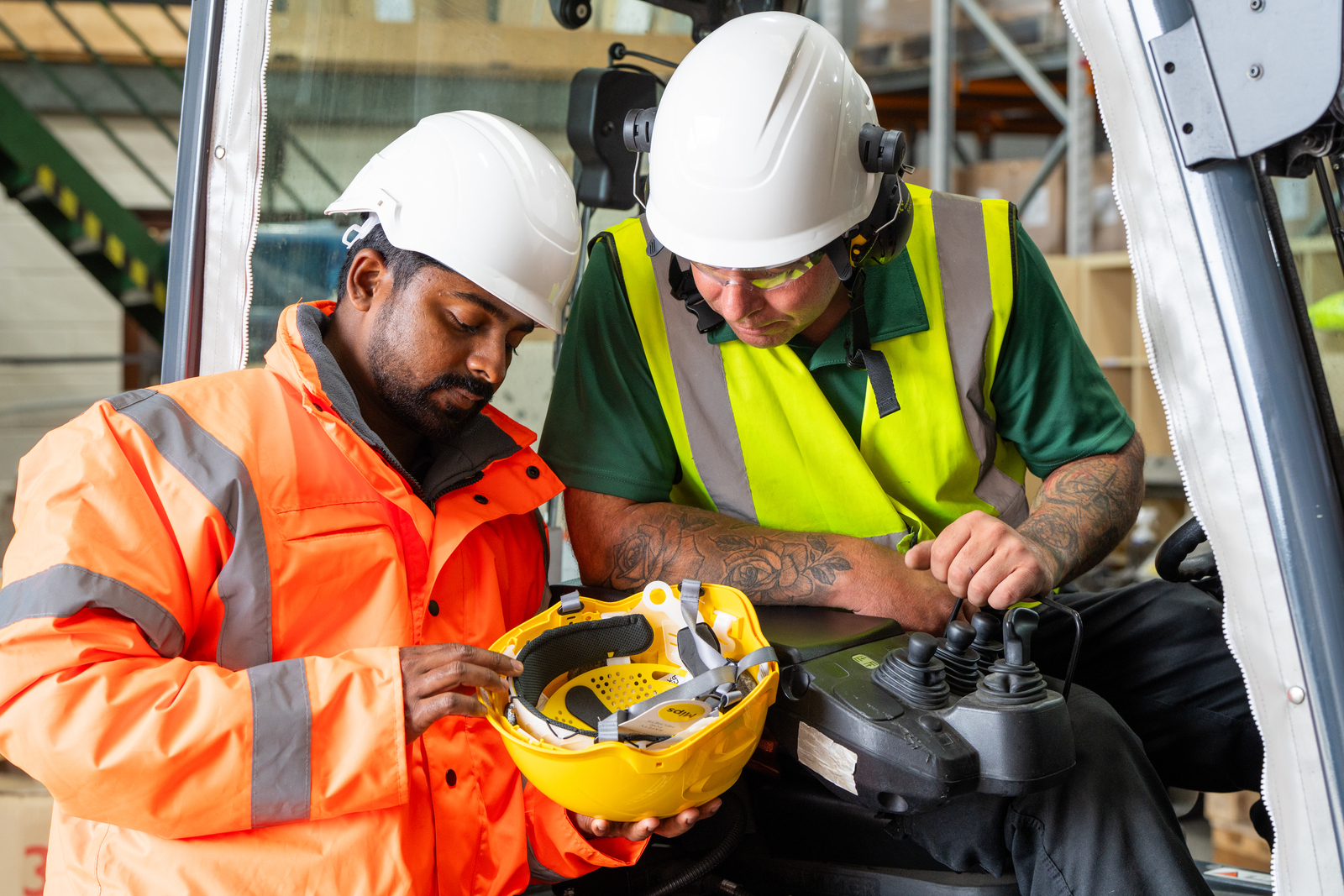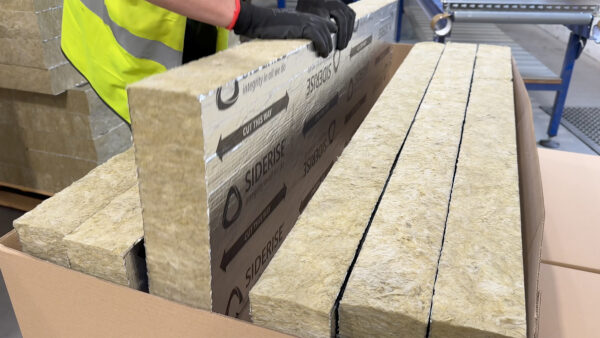
If you spend most of your time on a construction site, you’ll know that hitting your head can be part of the job – but do you know when that can mean a more serious injury, such as concussion? Head protection expert and founder of Hard Hat Awareness Week Chris Tidy looks at the results of CM’s recent survey.
1. Do you know how to diagnose a concussion?
The first question shows that over half (55%) of respondents don’t know how to diagnose a concussion. Perhaps more worryingly, 45% think they know how to diagnose a concussion. Diagnosing concussions (especially in non-medical settings) is notoriously difficult. Only suitably qualified medical professionals should attempt to diagnose concussion, and even then, a cautious approach should always be taken.

A concussion is often referred to as a mild head injury, and while most mild head injuries result in no long-term damage to the brain, it can cause temporary disruption to brain function that can last for a matter of hours to days, weeks or even months. A head injury is any injury to your brain, skull, or scalp. A concussion is a type of traumatic brain injury, or TBI, caused by a bump, blow, or jolt to the head or a hit to the body that causes the head and brain to move rapidly back and forth, which can cause your head to be exposed to something called rotational motion.
The next question was, ‘Have you or anyone you know had a concussion whilst at work?’ – A resounding 84% said No. However, where yes, the respondents gave examples, ranging from falling object impacts to striking the head against an object (predominantly scaffolding.) There were also examples of people not wearing hard hats, and some tripped and fell from the same level. Head injuries can be as severe as a concussion, fractured skull, internal bleeding, and damage to the brain or as mild as a knock, bump, bruise, or cut on the head, so do not take any chances and get it checked out!
Concussions are a common injury in the construction industry. In fact, according to the Health and Safety Executive (HSE), construction workers are more likely to suffer a concussion than any other type of worker in the UK. They are also a costly problem for the construction industry. The HSE estimates that the cost of work-related concussions in construction is £34 million annually. This includes the cost of medical care, lost productivity, and compensation for workers unable to work due to their injuries. (7, 8)
The cost of concussions is not just a financial burden. It is also a human cost. Concussions can cause long-term problems, such as memory loss, difficulty concentrating, and depression. These problems can significantly impact the lives of workers who suffer from them.
2. Do you know and understand the symptoms of concussion?
Over a third of respondents stated they did not know or understand concussion symptoms, and over 60% responded that they do. Organisations like Headway and Silver Lining Brain Injury Charities offer resources on spotting and understanding concussion symptoms, albeit a definitive concussion diagnosis should only be done by a qualified medical professional. As a sector, we need to increase education and training on the risks of head injuries. Only then can we begin to help mitigate them.
3. Have you or anyone you know experienced a blow to the head at work?
The responses to this question are interesting, with over 18% responding yes and over 22% providing examples. Most examples provided were impacts with scaffolding, which seems to be a recurring theme from Q2. Examples included dropped objects, being struck by, or striking your head against an object and varied in degrees of resulting injury, with one death being cited due to a digger bucket impact to the head. It’s worth noting that Traumatic Brain Injuries occur on a spectrum – the most common being a mild TBI or concussion.
Hitting your head on a cabinet door, falling over, or getting injured playing a sport might cause one of these mild TBIs. The most common type of TBI is a concussion, which accounts for up to 75% of all TBI cases. (3) (4) These injuries are far more common than you think; 50% of TBIs go undiagnosed or detected, (3) (5) while 90% of diagnosed TBIs do not involve a loss of consciousness. (6)
While you might experience pain and some neurological symptoms from a concussion, a brain scan may not show any findings like bleeding, bruising, or swelling. People with a mild TBI or concussion usually feel better within a few weeks and, in some instances, sooner.
Moderate or severe TBIs, however, will show up on brain scans, usually in various ways. Hematomas, specifically epidural or subdural hematomas, are one way a TBI can manifest. Moderate to severe TBIs can also include contusions, bruising of the brain tissue or haemorrhages when active bleeding is present. TBIs can also progress from one degree to another, which is why it is so important to seek medical care. Some Hematomas can occur several days or even weeks following an injury to the head.
4. Do you know and understand the short and long-term risks of concussion?
Around 45% of people responded no to this question, with 33 skipping the question. My take is that the industry still has a long way to go regarding education and awareness of head injuries and concussions. Initiatives like Hard Hat Awareness Week are designed to break down barriers, get people talking about head safety, and make them more aware of head injuries and how debilitating they can be. Being more aware doesn’t stop head injuries, but it does help to recognise the risks involved and what can be done to help mitigate them.
5. Have you heard of the term ‘Rotational Motion’?
While 33% responded yes to this question, 66% answered no. If you spend most of your time on a construction site, you’ll know that hitting your head can be part of the job. Most of the time, it’s minor bumps, but sometimes it can be harder hits. Common accidents can be knocks to the side of the head, falling objects, slips, trips or falls. These can be angled impacts, and angled impacts can create a rotational motion.
The human brain is amazing – but sensitive, especially to rotational motion. Almost all head impacts generate rotational motion, which can cause strain on the brain tissue, which may lead to minor or severe brain injuries. Concussions or even more serious brain injuries are commonly caused by rotational motion transferred to the brain. The moment your head is hit by an object or hits the ground at an angle, it can be forced to start rotating more or less, depending on the impacting object or surface.
If the rotational motion generated is transferred to the brain, it can cause injury to the brain tissue or the blood vessels connected to the brain. Rotational motion results from oblique or angled impacts to the head. Dropped objects or striking your head against an object, including slips, trips and falls, do not always occur in a linear/straight line motion, some of these impacts are oblique/angled.
6. Do you think standard hard hats/safety helmets are designed to protect against rotational motion that may be caused by an oblique impact to the head?
Only just over 7% responded yes to this question with over 52% responding they do not know. Traditional safety helmets are developed and tested for straight impacts. But studies have shown that the brain is more sensitive to rotational motion (angled impacts) than linear motion (straight impacts). (2) Rotational motion can be dangerous and result in traumatic brain injuries (TBIs). When rotational motion is involved, even impacts that might be considered light can cause concussions due to the brain’s sensitivity.

The brain is more sensitive to rotational motion than linear motion because it has shear properties similar to water or gel. When different parts of the brain move relative to each other due to rotational motion, the tissues can stretch, which can cause concussions or other brain injuries. Our brains consist mostly of water. The brain and the cerebrospinal fluid fill up most of the skull. Water is incompressible, so the brain will not move much from a straight impact.
However, most angled impacts introduce a rotational motion to the head. Rotational motion to the head cause the brain to rotate inside the skull. This causes a relative movement between the skull and the brain which can cause a tear of blood vessels as well as strain in the brain and can cause a TBI.
Unfortunately, at this time there is no rotational testing within the industrial helmet standard EN397, but wearers should also be aware that the standard is only the minimum requirement. There are additional features to look out for.
7. Do you feel you have enough training and information from your employers about head injuries?
Over 65% responded no to this question, bringing me back to how education is key in the fight against head injuries.
8. Do you feel wearing a hard hat/safety helmet gives you adequate protection against head injuries whilst at work?
Nearly 70% responded yes but 25% responded no with a comment. The explanations were interesting and varied with some doubting that they give you enough protection. While wearing a hard hat/safety helmet may help reduce an incident’s severity, it will not always eliminate the risk completely. Luke Griggs from the UK’s Brain Injury Charity Headway commented:
“We spend a lot of money purchasing our mobile phones and want to protect them, so we buy a case to ensure it does not get damaged. These phones contain our precious memories, photos, organisers, diaries, and communication tools. They are everything to us, and we want to protect them. Our brains are the most precious computer we will ever own. They do everything for us from how we walk, talk, think and feel. They contain our most precious memories, how we act, and everything we do is created by our brains.
“You cannot just replace a screen if your skull fractures, you cannot get a new part if it’s faulty and you cannot upload the data to a new brain if you injure it. We must start educating people about protecting their brains and keeping them secure, not just hoping it will not happen to us. We must change this attitude from something we have to do to something we want to do. It has got to be that cultural change so people buy into this attitude. You only have one brain so look after it.”
Video on HHAW website – Luke Griggs, Headway
9. Do you know what kind of motions the brain is most sensitive to?
A massive 85% responded ‘Rotational Motions’ to this question which is great. As head injuries stem from both linear and rotational motion, it is important to account for both when it comes to head safety.
Hard Hat Awareness Week aims to encourage best practices around safety equipment and awareness of head injuries and educate on real-life impact scenarios, rotational injuries and how they occur.
To prevent head injuries onsite, we must first understand the risk. This will involve the supply chain, the workforce, and the users to change the whole industry perspective through education and awareness.
References
On the subject of brain sensitivity Kleiven 2003, Kleiven 2007 and https://www.ncbi.nlm.nih.gov/pmc/articles/PMC4090913/
The neuropathology of traumatic brain injury – https://www.ncbi.nlm.nih.gov/pmc/articles/PMC4694720/
Translational Research in Traumatic Brain Injury – https://www.ncbi.nlm.nih.gov/books/NBK326730/
American Medical Society for Sports Medicine position statement: concussion in sport https://pubmed.ncbi.nlm.nih.gov/23243113/
Concussion – https://www.ncbi.nlm.nih.gov/books/NBK537017/
concussion-in-the-workplace-factsheet.pdf (headway.org.uk) (headway.org.uk) Health and safety in construction (HSG150) (hse.gov.uk)
Statistics – Index of tables (hse.gov.uk)
Work-related traumatic brain injury in the construction industry in Sweden and Germany – Karin Brolin, Daniel Lanner, Peter Halldin – ScienceDirect https://www.sciencedirect.com/science/article/pii/S0925753520305439











